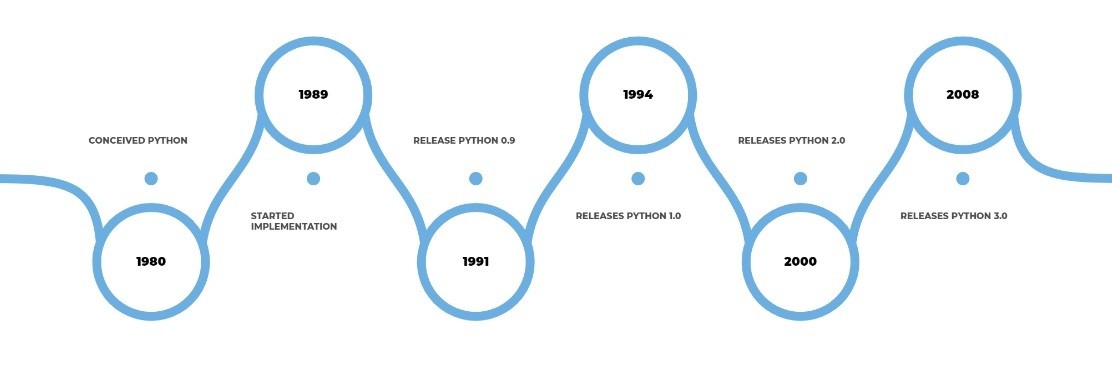Introduction To Python

What is Python?
Python is a versatile and beginner-friendly programming language known for its clear, readable syntax. It allows developers to write code that’s easy to understand and maintain, making it ideal for everything from web development and automation to data science and artificial intelligence.
As an open-source language with strong community support, Python runs on all major platforms and supports multiple programming styles, making it one of the most popular and widely used languages in the world today.
History and Evolution of Python
Python was created by Guido van Rossum and first released in 1991 as a general-purpose programming language focused on code readability and simplicity. Inspired by languages like ABC and C, Python was designed to be easy to learn and versatile. Over time, it evolved significantly—Python 2 introduced new features but lacked consistency, leading to the development of Python 3 in 2008, which cleaned up the language and improved its design. Today, with frequent updates and a massive global community, Python continues to grow, powering everything from basic scripting to advanced machine learning and enterprise applications.
Features and Advantages
Python offers a range of features that make it both beginner-friendly and professionally powerful. Its clean and readable syntax reduces the learning curve for new programmers, making it an ideal first language. Python’s vast standard library and thousands of third-party packages enable rapid development across domains such as web development, data analysis, artificial intelligence, and automation.
Being cross-platform and open-source, Python supports multiple programming paradigms including procedural, object-oriented, and functional programming styles. Its ability to integrate with other languages and tools, along with the support of a strong global community, makes Python a highly flexible, scalable, and in-demand language in today’s tech-driven world.
Real-world Applications of Python
Python’s versatility shines across industries: it underpins web development (Django, Flask), data science and AI (Pandas, NumPy, TensorFlow), and task automation. It’s also key in scientific research, game development, cybersecurity, and robotics—powering everything from startups to tech giants like Google, Netflix, NASA, and Instagram.
Python in the Modern Ecosystem
Python is central to modern tech, with seamless integration into cloud platforms, DevOps, and microservices. Its rich ecosystem of libraries, frameworks, and community support makes it a go-to language for web development, data science, and automation.
Versions of Python

Python's Versions
Introduction to Python 10
Introduction
Python 1.0 (1991)
Python 1 marked the beginning of a language designed for readability, simplicity, and ease of use, aiming to strike a balance between low-level languages (like C) and shell scripting.
Python 2.0 (2000)
Python 2 made programming in Python smoother and more efficient. It vastly expanded and enriched its toolkit, making a wider range of tasks achievable right out of the box.
Python 3.0
Python 3 aimed to correct inconsistencies and design flaws, even if it meant breaking backward compatibility. It eliminated outdated ways of doing things, promoting more modern and intuitive methods.
Python 3.11
Python 3's subsequent versions have consistently refined the language. This period has seen Python embrace modern programming paradigms, expand its library, enhance performance, and adapt to user needs and global tech trends.



